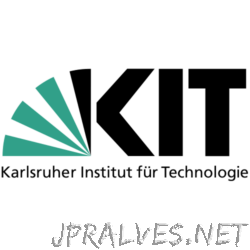Other

“A new process developed at the Karlsruhe Institute of Technology (KIT) enables printing of nanometer-scale quartz glass structures directly onto semiconductor chips. A hybrid organic-inorganic polymer resin is used as feedstock material for 3D printing of silicon dioxide. Since the …

“In our daily lives, lithium-ion batteries have become indispensable. They function only because of a passivation layer that forms during their initial cycle. As researchers at Karlsruhe Institute of Technology (KIT) found out via simulations, this solid electrolyte interphase develops …

“KIT researchers are working on a new qubit approach - publication in Nature Materials Quantum computers are considered the computers of the future. A and O are quantum bits (qubits), the smallest computing unit of quantum computers. Because they not only …

“Printing objects from plastic precisely, quickly, and inexpensively is the goal of many 3D printing processes. However, speed and high resolution remain a technological challenge. A research team from the Karlsruhe Institute of Technology (KIT), Heidelberg University, and the Queensland …

“In the HyPERiON CRC coordinated by the Karlsruhe Institute of Technology (KIT), researchers from KIT and the universities of Kaiserslautern, Konstanz and Stuttgart are jointly developing technology for compact high-performance magnetic resonance units. In the future, the devices could be …

“Researchers at KIT develop perovskite/CIS tandem solar cells with an efficiency of nearly 25 percent; combination of materials enables mobile applications. Stacking solar cells increases their efficiency. Working with partners in the EU-funded PERCISTAND project, researchers at the …

“Computer systems that are physically isolated from the outside world (air-gapped) can still be attacked. This is demonstrated by IT security experts of the Karlsruhe Institute of Technology (KIT) in the LaserShark project. They show that data can be transmitted …

“Researchers of the Cluster of Excellence 3D Matter Made to Order Show How 3-dimensional Nanostructures Can Be Printed Using Compact Desktop Devices – Publication in Nature Photonics Lasers in conventional laser printers for paper printouts are very small. 3D laser printers …

“Some of today’s vehicles already feature more than 100 control units. This high complexity of electrical and electronic systems and their architecture will further increase, but must remain manageable. The “Software-Defined Car” (SofDCar) project, in which Karlsruhe Institute of …

“The main idea of the LeMoStore project is to flexibly combine different energy storage technologies and to connect battery modules to the power grid via a grid-compatible inverter. For this purpose, Karlsruhe Institute of Technology (KIT) collaborates with partners from …

